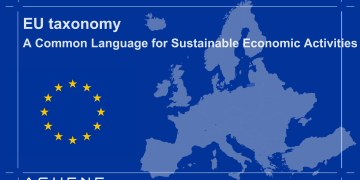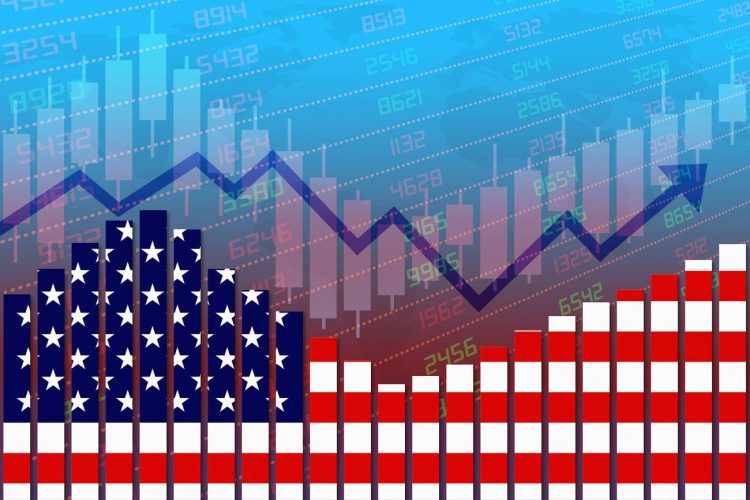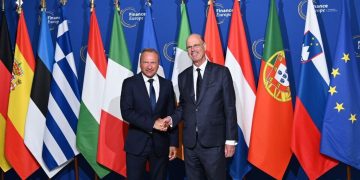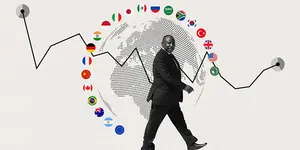How U.S. Tariffs Are Reshaping European Markets**
Introduction
Transatlantic trade has historically been a cornerstone of global economic stability, with the United States and the European Union representing two of the largest integrated markets in the world. However, 2025 has brought renewed attention to trade tensions between the U.S. and Europe. In response to perceived unfair trade practices, subsidies, and strategic economic initiatives, the United States has imposed a series of targeted tariffs on European goods. These tariffs have triggered complex ripple effects across European financial markets, currency flows, corporate profitability, and investor sentiment.
Unlike traditional trade disruptions, modern transatlantic tensions are amplified by highly interconnected financial systems, global supply chains, and multinational corporate structures. The imposition of tariffs, while relatively modest in direct economic terms, can trigger outsized market responses due to signaling effects, risk repricing, and investor psychology. The question for 2025 is not merely the size of the tariffs, but how European markets respond, how capital reallocates, and how transatlantic investors adjust portfolios in an era of renewed trade uncertainty.
This article explores the drivers of U.S.-Europe trade tensions, analyzes the financial and corporate spillovers, and evaluates the broader implications for the European economy and global financial markets.
I. The Origins of Transatlantic Trade Tensions
1. U.S. Strategic Economic Interests
The U.S. administration in 2025 has identified several key European industries for targeted action:
- Aerospace and defense subsidies
- Automotive and EV manufacturing incentives
- Renewable energy support programs
- Digital technology regulation and data protection policies
From the U.S. perspective, these measures constitute unfair competitive advantages, prompting tariff measures to level the playing field.
2. European Policy Responses
The European Union has historically relied on diplomacy and multilateral institutions to resolve trade disputes. In 2025, its options are constrained by:
- Internal divisions between Northern and Southern members
- Limited flexibility in fiscal or monetary support
- Exposure of key sectors (e.g., automotive, luxury goods) to U.S. markets
European governments are forced to weigh retaliation against potential escalation and the economic impact on consumers and firms.
3. Macro-Economic Environment
The broader context includes:
- Weak European GDP growth
- ECB monetary easing
- Volatility in global energy markets
- Ongoing supply-chain vulnerabilities
Trade tensions thus compound an already fragile economic landscape, influencing both financial markets and corporate strategies.
II. Direct Financial Market Spillovers
1. Equity Market Repricing
The imposition of U.S. tariffs has had immediate effects on European equities:
- Companies exposed to U.S. exports (automotive, aerospace, luxury goods) see multiple compression
- Defensive sectors (utilities, healthcare, consumer staples) outperform
- Investors reallocate toward domestic-oriented firms to hedge trade risk
This sectoral differentiation increases overall market volatility.
2. Bond Markets
- Peripheral Eurozone sovereign debt reacts to trade uncertainty
- Investors perceive higher risk of slower growth, pushing yields slightly higher
- Safe-haven assets such as German Bunds and Dutch government bonds see inflows
Corporate credit markets similarly show spreads widening for firms reliant on U.S. trade.
3. Currency Movements
The euro experiences two opposing pressures:
- Tariffs weaken export competitiveness → downward pressure on EUR
- Global uncertainty triggers safe-haven flows → upward pressure on EUR
The net effect is increased FX volatility, complicating corporate hedging strategies.
III. Corporate-Level Spillovers
1. Automotive and Manufacturing
European automotive giants face:
- Direct costs from tariffs on U.S. exports
- Supply-chain disruptions from retaliatory measures
- Reallocation of production to mitigate impact
Investment decisions, particularly in EV and green technologies, are delayed or relocated, reducing short-term growth prospects.
2. Aerospace and Defense
- Targeted U.S. tariffs on aerospace components impact margins
- Export-driven contracts face higher uncertainty
- Financing costs for long-term projects may rise due to perceived risk
3. Technology and Data-Driven Industries
- Tariffs indirectly affect digital infrastructure investments
- Compliance costs for data and regulatory alignment increase
- European tech firms face competitive disadvantages relative to U.S. peers
IV. Investor Behavior and Capital Flows
1. Risk Repricing
Investors react to trade tensions by:
- Reducing exposure to European equities with U.S. dependency
- Increasing allocation to domestic European assets or other global markets
- Rebalancing portfolios toward sectors less sensitive to tariffs
2. Bond and Money Market Adjustments
- Corporate bonds in affected sectors see spreads widen
- Sovereign debt benefits from safe-haven flows
- ECB interventions moderate excessive volatility
3. Hedging and Derivatives
- Increased use of FX forwards and options to mitigate euro-dollar risks
- Interest-rate swaps adjust for potential growth slowdown
- Commodity hedges for industries reliant on energy and raw materials

V. Broader Economic Implications
1. GDP and Trade Balance
- Tariffs reduce U.S.-bound exports, impacting European GDP growth
- Trade diversion may occur, as firms seek alternative markets
- Some export sectors face permanent market share loss if the U.S. market is partially closed
2. Inflationary Impacts
- Higher import costs may increase domestic prices
- ECB must balance easing with potential import-driven inflation
- Monetary policy becomes more complex under mixed signals
3. Structural Competitiveness
- European firms accelerate automation and supply-chain localization
- Investment in efficiency and domestic markets offsets some U.S. exposure
- Long-term industrial strategies may shift toward resilience and regional self-reliance
VI. Geopolitical and Policy Dimensions
1. EU Cohesion
Tariff shocks test EU solidarity:
- Northern and Southern member states have differing exposure and priorities
- Political friction arises over retaliation strategies
- Common trade policy faces heightened scrutiny
2. International Negotiations
- Tariffs encourage multilateral talks in WTO and G7 contexts
- Strategic bargaining shapes investment expectations
- Early resolution or escalation significantly affects market confidence
3. Policy Coordination with ECB
- ECB must weigh economic stimulus against trade shock-induced volatility
- Coordination between fiscal and monetary policy becomes critical
VII. Risk Management Strategies for European Investors and Firms
1. Hedging Currency and Tariff Risk
- Active use of derivatives
- Diversified trade partners
- Flexible supply-chain management
2. Portfolio Diversification
- Allocate to less export-dependent equities
- Use safe-haven government bonds
- Adjust sectoral allocations dynamically
3. Scenario Planning
- Stress-test cash flows under various tariff escalation scenarios
- Assess potential currency, interest-rate, and market impacts
- Incorporate geopolitical risk in investment models
VIII. Long-Term Outlook
- Persistent tension scenario: Prolonged tariffs lead to structural reallocation of production, long-term equity and bond market volatility, and slower growth.
- Resolution scenario: Diplomatic or multilateral agreements reduce tariffs, restore investor confidence, and normalize market conditions.
- Mixed scenario: Gradual adjustment in trade, partial tariff relief, sector-specific impacts, uneven recovery across European economies.
The ultimate trajectory will depend on policy choices in Washington and Brussels, as well as global economic trends.
Conclusion
The 2025 transatlantic trade tensions underscore the interconnectedness of U.S. and European financial systems. While tariffs may appear targeted and limited, their spillover effects on European equities, bonds, currencies, and corporate profitability are significant. Financial markets respond not only to direct economic consequences but also to investor sentiment, risk repricing, and structural uncertainties.
For European policymakers and investors, the key challenge is to navigate a complex landscape: balancing economic growth, corporate resilience, and market stability while managing exposure to U.S.-driven trade shocks. For global investors, understanding the nuanced impacts of transatlantic trade policies is essential to optimize asset allocation and risk management strategies in 2025 and beyond.




































